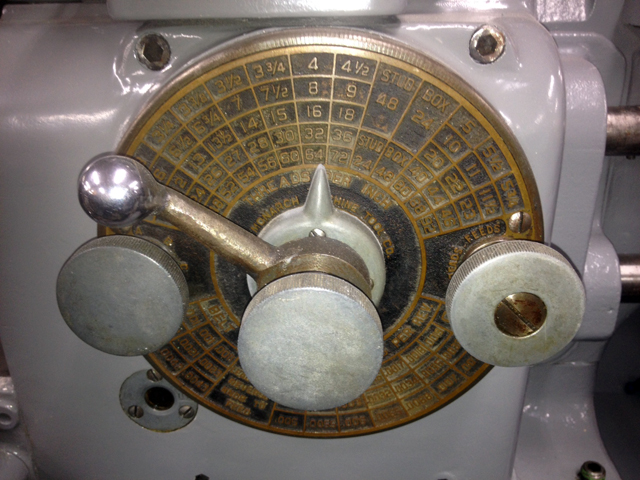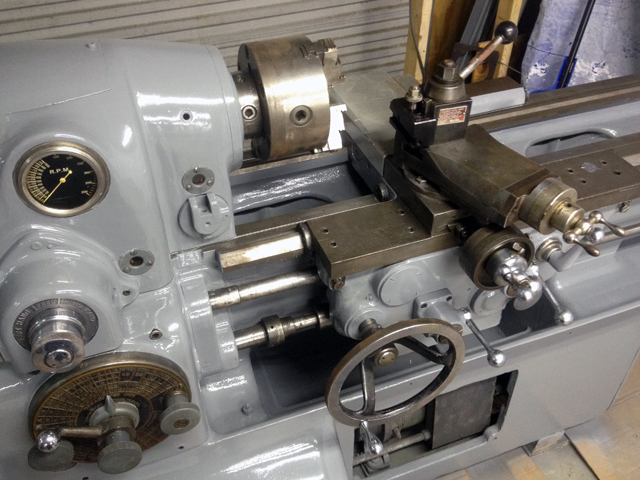| Author | Message | ||
Bob uk Unregistered guest Posted From: 94.197.122.90 |
I done a 6 week training course on centre lathe turning aged 16. The lathe is a very intuitive machine to learn and use. The basics take less than an hour to learn. People who have never seen a lathe immediately know because it is so obvious. Within an hour the average person can turn diameters to an accuracy of 2 thou. There are web sites that show every thing you could possibly want to know and then some. A lathe is a extremely very versatile tool very!!! I could easily make a complete brake caliper that is as good as any other. After little practice anyone could make a caliper piston to an accuracy of 0.0002 inches. The whole caliper would take a bit more skill and ingenuity. I have used lathes lots of times and have become quite fast and often machine to less than a thou. It is very easy because the machine does the work and a lathe wants to turn accurately. My lathe is a 1920 6" swing Holbrook tool makers lathe with leadscrew for screw cutting metric or imperial. It cost £150 in 1985. The lathe is worn to much for professional use. How ever with a bit of skill and using heavy oil in the bearings it can still turn accurately. Best for home is.a Colchester 6" swing lathe. These are high precision because they are cheap new engineers by them new and use them to turn bits to an accuracy of 0.00005 or 1/2 tenth of thou where even body heat causes measurement problems. After about 20 years the lathes are a bit worn. So they sell them at auctions for £1000 -2000 These machines are more accurate worn than other makes when New. I have made bit to repair my lathe using the same machine. And could make other machines using that machine. (Message approved by david_gore) | ||
David Gore Moderator Username: david_gore Post Number: 1422 Registered: 4-2003 |
Bob, One area where Britain excels [excelled??] is making durable and accurate lathes unlike the cheaper Asian versions. It is my opinion the reason for this is the cast-iron beds were allowed to age before machining to relieve residual stresses in the casting [sometime a year or more in an outside storage yard]. Adds to the cost but gives a stable bed that is very unlikely to go out of alignment over time. The Asian beds are most likely cast one day, machined the next and assembled the following day [facetious but not far from what actually happens] to keep costs down. Subsequent internal stress relieving after machining may cause the bed to twist/bend making subsequent accurate alignment a headache or sometimes virtually impossible from stories I have heard from model engineers and machinery restoration addicts. Old UK-manufactured lathes and milling machines in good condition can achieve surprising prices [sometimes more than then new price of an Asian equivalent] at closing-down auctions for companies forced out of business by cheap import competition. Toolmakers are often the best source as they have a vested interest in looking after their machines to maintain accuracy. | ||
Geoff Wootton Grand Master Username: dounraey Post Number: 446 Registered: 5-2012 |
I've occassionally been tempted by the $1000 bench top lathes. My instinct tells me to keep well away. Does anyone know if these cheap lathes are accurate enough to warrant buying? Geoff | ||
Bob uk Unregistered guest Posted From: 94.197.122.74 |
Desk top lathes are ok for small short work When doing long stuff they tend to wander due to beds not being properly made on cheap ones Also power and size is smaller. A 6 inch swing is 12 diameter plus mine has a gap bed so close to the.chuck I can go to 24 dia and get fly wheels in. Also weight. The weight of casting of the lathe should be heavy like an anvil dead feeling and absorbing of shock loads. My lathe will drill 1 inch holes like butter. And aluminum 2 ". It will easily drill through 12" of steel. It weighs 750 kg . £500 will buy a worn lathe that will still be accurate enough for car stuff (Message approved by david_gore) | ||
Bob uk Unregistered guest Posted From: 94.197.122.79 |
BMW racing division used to buy used 100k mile cars get the engine block leave it outside for a year. To make certain that block is fault free ( tested for a 100k) and no stress. And then rebuild to 5 times the power for racing. Also boiler plate when I used this stuff for pipe flanges. Because it was cut flame with it had stresses from the flame and a crust from hot rolling. I would face both sides, bore and outer then throw on the floor and next one and so on. Then few days later finish machine if you.didn't knock them about and leave them within hours on finish machining they would rock on the surface table. And in general the tolerances were + or minus 5 thou and a warp of 10 thou was easy to get if rushed. UK still makes good machine tools I recommend Colchester because they are cheap new and numerous and have probably put a lot of competitors out of business. My Holbrook is probably the oldest one in the UK What some don't realise is that the first lathes were wooden treadle drive machines with a wood return spring called a lathe of wood. The.first ones were used by the.first axle makers Barney rubble use to be a Turner before he met betty. Using crude machinery better ones were made and then better still Every lathe is not only descended from the first but indirectly made by the first lathe. The invention of wheel caused the axle and the axle caused the lathe to be invented. That is probably the start on engineering. Without the lathe no engineering products could be made and a lot of other stuff. My lathe has made and saved money It makes impossible jobs possible. I never worry about mechanical stuff because any problems such as a broken crankshaft I can make. It would take ages but it is doable because I have done exactly that for a pump. And then there's wood turning metal spinning friction welding. The only problem is 3 phase power or lack of. Machine Mart do 3" swing lathes for less than £1000 but are most likely Asian made The remark about how fast the beds are made was not an exaggeration. Because I saw a rear axl casting for a farm tractor with scabby blow holes filled.with putty. Someone must have seen it before it was fitted. The axle snapped two weeks after New. So not leaving castings to age is about right. Dean Smith and Grace were the RR of lathes. (Message approved by david_gore) | ||
John Beech Prolific User Username: jbeech Post Number: 232 Registered: 10-2016 |
Lathes are a subject near and dear to my heart. And while we have several, CNC lathes simply aren't worthy of discussion and quite likely beyond the scope of this discussion. However, here's the two splindle Eurolathe in operation making some of our model helicopter parts if you'e keen to see how things are made (many are). https://www.youtube.com/watch?v=ONpESjThqEI https://www.youtube.com/watch?v=RkJcEcCkSUU However, while I own two other CNC lathes, my real favorite is a manual Monarch lathe, which was manufactured for delivery and installation at the US Navy Philadelphia Yard. I have her production logs plus the installation records showing where she was signed off as ready for service on Friday December 5th, 1941 (the Friday before the Japanese attack). Anyway, Mandy (the Monarch) was never used in the production or repair shops but instead served her entire life in the prototype shop. That is, until 1995 when the prototype shop foreman retired and coincidentally, this particular lathe was determined to be surplus to needs and thus, offered through DRMO (military surplus sales branch) where selfsame foreman bought her to have during his retirement years. Anyway, I bought it from him when he really retired (age 80ish). This, a few years back. I restored her (Monarch is still making this very lathe and like Rolls-Royce were amazingly helpful with sharing their manufacturing records - and it's true, castings are buried to season for two years before being dug up to be finish machined). Anyway, when I say she's a lovely bit of kit, believe me.  - Adjusting speed is easy Moreover, when I remove the 3-jaw Buck chuck and install the Royal collet closer she'll easily make parts down to 2-ten thousandths with ease (this, over a length of 6"). Moreover, and quite frankly, while my skills don't deserved such a high quality machine tool, I nevertheless lusted for her and continue to love her dearly. Everyone should own a lathe although, admittedly, an art deco example like Mandy is a bit over the top . . . then again, so is Tootsie, my 1969 Silver Shadow!  - Mandy's built in tachometer  - Mandy's beautiful carriage and bed Finally, with respect to 3-phase power, this is sorted out quite simply with a phase converter. Either old-style using an idler motor (probably the best way) or new-style using a VFD. The advantage of the VFD method is you can run the drive motor faster and achieve faster speeds and thus, feeds. Since I only have her for prototype work I don't really give a damn about running her hard so I depend on an idler motor system (although I d use a VFD for an old Bridgeport CNC mill I converted from paper tape operation to run Mach 3 software for control). Along with a Fadal CNC mill this comprises the bulk of the machine tools in my prototype shop (I outsource the vast majority of production after we've fine tuned the parts design to suit). | ||
Robert Noel Reddington Grand Master Username: bob_uk Post Number: 1334 Registered: 5-2015 |
lovely lathe |